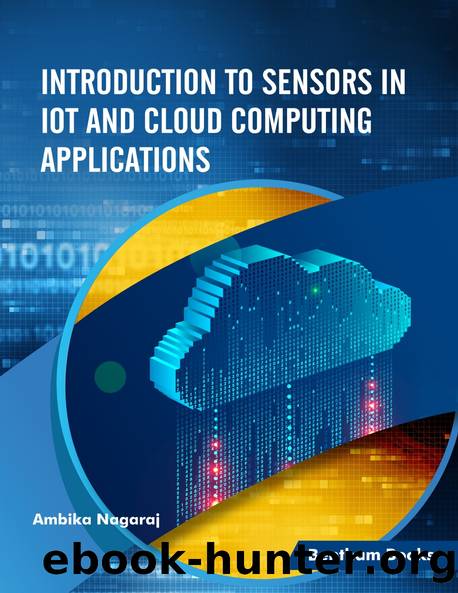Introduction to Sensors in IoT and Cloud Computing Applications by Ambika Nagaraj;

Author:Ambika, Nagaraj; [Неизв.]
Language: eng
Format: epub
ISBN: 978-981-14-7933-5
Publisher: Bentham Science Publishers Ltd.
Published: 2021-01-20T21:00:00+00:00
Authorization and Authentication
The public-key cryptosystems have an advantage for building verification plans or approval frameworks. The absence of a worldwide root authentication authority impedes numerous hypothetically plausible schemes from really being sent. Without the International root Certificate Authority, it turns out to be extremely difficult in testing the structure and validating the framework for IoT. Hence, the idea of designated confirmation and appointed approval ponders over IoT.
Moosavi, et al. [13] recommended the design that depended on the authentication based Datagram Transport Layer Security (DTLS) handshake convention [14] as it is the central IP security answer for IoT. The proposed confirmation and approval engineering have tried by building up a model IoT-based human services framework. The model works on a Pandaboard, a TI SmartRF06 board, and WiSMotes. The CC2538 module coordinated into the TI board goes about as a shrewd entryway. The WisMotes go about as medicinal sensor hubs. The proposed engineering is more secure than a best in class unified assignment based design. It utilizes an increasingly safeguard key administration provision between sensor hubs and the keen entryway.
Seitz et al. [43] suggested a lot of security and execution necessities for the setting. The approval structure circulating and handling costs between compelled gadgets are less obliged by the back-end servers. The procedure keeps the message trades with the impelled devices at the very least. The configuration [44] depends on OAuth 1.0a, which is an open approval standard for web applications. The plan actualizes on a genuine MQTT-based IoT administration stage.
The work [45] is a productive verification and access control strategy that depends on the general perspective on the security issues for the recognition layer of the IoT. It concentrates on shared confirmation and secure foundation dependent on Elliptic Curve Cryptosystem (ECC). It has a lot of lower stockpiling and correspondence overheads. To get to the control approach, the authors have used the ABAC-based approval technique. The proposal [46] concentrates on a straightforward and constructive secure foundation dependent on ECC. For the entrance control strategy, the authors have suggested RBAC-based (role-based Access Control) approval technique utilizing the thing's specific role and application in the related IoT organization.
Download
This site does not store any files on its server. We only index and link to content provided by other sites. Please contact the content providers to delete copyright contents if any and email us, we'll remove relevant links or contents immediately.
Management Strategies for the Cloud Revolution: How Cloud Computing Is Transforming Business and Why You Can't Afford to Be Left Behind by Charles Babcock(4131)
Ego Is the Enemy by Ryan Holiday(3991)
Offensive Shellcode from Scratch by Rishalin Pillay(3679)
Exploring Deepfakes by Bryan Lyon and Matt Tora(3271)
Robo-Advisor with Python by Aki Ranin(3052)
Learning C# by Developing Games with Unity 2021 by Harrison Ferrone(2875)
Speed Up Your Python with Rust by Maxwell Flitton(2852)
Liar's Poker by Michael Lewis(2812)
Agile Security Operations by Hinne Hettema(2807)
Linux Command Line and Shell Scripting Techniques by Vedran Dakic and Jasmin Redzepagic(2807)
OPNsense Beginner to Professional by Julio Cesar Bueno de Camargo(2806)
Extreme DAX by Michiel Rozema & Henk Vlootman(2790)
Essential Cryptography for JavaScript Developers by Alessandro Segala(2743)
Elevating React Web Development with Gatsby by Samuel Larsen-Disney(2733)
Python for ArcGIS Pro by Silas Toms Bill Parker(2648)
AI-Powered Commerce by Andy Pandharikar & Frederik Bussler(2642)
Incident Response Techniques for Ransomware Attacks by Oleg Skulkin(2628)
Distributed .NET with Microsoft Orleans by Bhupesh Guptha Muthiyalu Suneel Kumar Kunani(2628)
Cryptography Algorithms by Massimo Bertaccini(2627)
